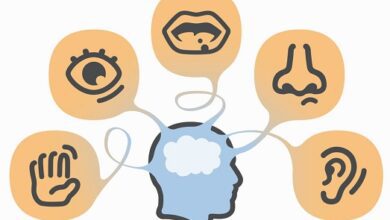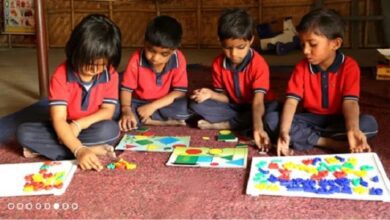What is integration in education and difference with inclusion and concept
Educational Integration
“Integration is envisaged as a process aimed at taking into account and meeting the diversity of the needs of all students for greater participation in learning, cultural life and community life, and for a reduction in the number of students. that are excluded from education or excluded within education. It involves changing and adapting the content, approaches, structures and strategies, based on a common vision that encompasses all children in the age group contemplated and with the conviction that the ordinary educational system has the duty to educate all children. In this article we will define you that What is integration in education?
Concept
Birch (1974) defines educational integration as a process that aims to unify ordinary and special education with the aim of offering a set of services to all children, based on their learning needs.
Kaufman (1985), defines integration in the educational framework “mainstreaming” as: “referred to the temporal, instructive and social integration of a selected group of exceptional children, with their normal companions, based on educational planning and a process` evolutionary and individually determined programmer. This integration required a classification of responsibilities between the regular and special educational personnel and the administrative, instructor and auxiliary personnel. “
The NARC (National association of Retarded Citizens, USA) defines it as: “integration is a philosophy or principle of offering educational services that is put into practice through the provision of a variety of instructional and class alternatives, which are appropriate to the educational plan, for each student, allowing the maximum instructive, temporal and social integration between deficient and non-deficient students during the normal school day “.
Educational integration assumes that:
- A child who goes to school for the first time and who, due to his characteristics, could have been sent to the special center, is taken into the ordinary center.
- Children who are in special centers go to ordinary centers in one of the integration modalities.
- Children who are full-time in a special education unit of an ordinary center are gradually incorporating it into the ordinary classroom.
- Boys and girls who are in the ordinary classroom that in other circumstances would move to a more restrictive place – a special classroom or a specific center – will now continue in that ordinary classroom.
All this taking into account a series of premises such as:
- This is a difficult and complex process and depends on many circumstances: the child himself or herself, the center and the family. Each case requires a study and a specific treatment.
- There are different situations or forms of integration. It will not always be possible for the student to be integrated into the ordinary classroom of an ordinary school; This is the ideal towards which one should tend, but there will be cases in which, due to various circumstances, their integration modality has to be different.
- The placement of a child in a certain place or environment will not last forever, they are that, through periodic reviews, an attempt will be made to provide them with situations that involve a higher level of integration.
- This integration process begins with the assessment and identification of the student’s special educational needs and is accompanied by the provision of personal aids, materials, curricular adaptations, etc., that enable further development.
- Integration does not imply a simple physical location in the least restrictive environment possible, but it means an effective participation in schoolwork, which provides the differentiated education that it needs, relying on the adaptations and means that are pertinent in each case.
Integration or inclusion?/difference
Semantically, include and integrate have very similar meanings, which makes many people use these verbs interchangeably. However, in social movements, inclusion and integration represent totally different philosophies, even when they have apparently the same objectives, that is, the insertion of people with disabilities in society.
The inclusive school is built on the participation and agreements of all the educational agents that come together in it. It considers the learning process of the students as the consequence of their inclusion in the school. It arises from an educational dimension whose objective is aimed at overcoming the barriers that some students encounter at the time of carrying out the school journey. An inclusive school is about achieving recognition of the right that everyone has both to be recognized, and to recognize themselves as members of the educational community to which they belong, whatever their social environment, their culture of origin, their ideology, sex, ethnicity or personal situations derived from a physical, intellectual, sensory disability or intellectual giftedness.
In this proposed school, the development of coexistence is carried out through dialogue. Conflicts become an opportunity for personal and social development, because it allows the agents in conflict to come together and develop their learning.
We can establish some of the differences between integration and inclusion, as Arnaiz (2003) and Moriña (2002) point out.
| INTEGRATING SCHOOL | INCLUSIVE SCHOOL |
|---|---|
| Focused on diagnosis | Focused on solving collaborative problems. |
| Directed to: Special education (students with nee) | Directed to: Education in general (all students) |
| Based on principles of equality and competition | Based on principles of equity, cooperation and solidarity (valuation of differences as an opportunity to enrich society) |
| Insertion is partial and conditioned | The insertion is total and unconditional |
| It requires superficial transformations | It requires ruptures in the systems (deep transformations) |
| It focuses on the student (the student is placed in specific programs) | It focuses on the classroom (ordinary classroom support). |
| It tends to disguise the limitations to increase the possibility of insertion. | It does not disguise the limitations, because they are real. |

